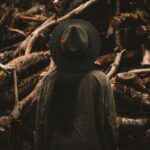The concept of natural selection, first proposed by Charles Darwin, has been a cornerstone of evolutionary biology. Natural selection is the process by which species adapt to their environment and evolve over time. This process can take several forms, including stabilizing selection, directional selection, and the least common form, disruptive selection. Each type of selection plays a unique role in shaping the biodiversity we see in the world today.
Understanding Disruptive Selection
Disruptive selection, also known as diversifying selection, is a type of natural selection that favors individuals at both extremes of a trait, leading to two distinct phenotypes within a population. Unlike stabilizing selection, which favors the average phenotype, or directional selection, which favors one extreme, disruptive selection can lead to increased genetic diversity within a population.
The factors leading to disruptive selection are diverse and complex. Environmental changes, competition for resources, and sexual selection can all contribute to this form of selection. For example, a sudden change in the environment may favor individuals with extreme traits that allow them to survive under the new conditions. Similarly, competition for resources may lead to disruptive selection if different resources are available in different parts of a habitat, favoring different traits in different areas.
Why Disruptive Selection is the Least Common
Compared to other forms of natural selection, disruptive selection is relatively rare. This is because the conditions favoring disruptive selection are less common. In most environments, the average phenotype is the most advantageous, leading to stabilizing selection. Similarly, in many cases, one extreme phenotype is more advantageous than the other, leading to directional selection.
However, in certain circumstances, disruptive selection can occur. For example, if a population is exposed to a new environment with different resources, disruptive selection may favor individuals with extreme traits that allow them to exploit these new resources. Despite its rarity, disruptive selection plays a crucial role in driving biodiversity and speciation.
Examples of Disruptive Selection in Nature
The peppered moth is a classic example of disruptive selection. Prior to the Industrial Revolution, the majority of peppered moths in England were light-colored, which allowed them to blend in with the lichen-covered trees. However, pollution from the Industrial Revolution killed off the lichen and darkened the trees, leading to a shift in favor of dark-colored moths. This is an example of disruptive selection, as the population split into two distinct phenotypes: light-colored moths in rural areas and dark-colored moths in industrial areas.
Another example of disruptive selection can be seen in Darwin’s finches. On the Galapagos Islands, different species of finches have evolved to exploit different food sources, leading to a wide range of beak shapes and sizes. This is a result of disruptive selection, as different traits are favored in different environments.
The Role of Disruptive Selection in Speciation
Disruptive selection can drive speciation, the process by which new species are formed. By favoring individuals at both extremes of a trait, disruptive selection can lead to the formation of two distinct phenotypes within a population. Over time, these phenotypes may become so different that they can no longer interbreed, leading to the formation of two new species.
For example, in a population of birds, disruptive selection may favor individuals with either very large or very small beaks. Over time, these two groups may become so different that they can no longer interbreed, leading to the formation of two new species.
Disruptive Selection and Genetic Variation
Disruptive selection can increase genetic diversity within a population. By favoring individuals at both extremes of a trait, disruptive selection can lead to the preservation of a wide range of genetic variants. This can increase the adaptability of a population, allowing it to survive in a wider range of environments.
On the other hand, genetic variation can also drive disruptive selection. If a population has a wide range of genetic variants, it is more likely that some of these variants will be advantageous in certain environments, leading to disruptive selection.
The Evolutionary Consequences of Disruptive Selection
Disruptive selection can have long-term effects on species and ecosystems. By driving speciation, disruptive selection can increase biodiversity, leading to more complex and resilient ecosystems. Furthermore, disruptive selection can lead to adaptive radiation, a process in which a single species rapidly evolves into a number of different species, each adapted to a different niche.
Disruptive Selection in Human Populations
Disruptive selection has also been observed in human populations. For example, in societies with strong social stratification, disruptive selection may favor individuals at both ends of the socioeconomic spectrum. Similarly, in societies with high levels of conflict, disruptive selection may favor individuals who are either very aggressive or very peaceful.
Looking to the future, disruptive selection could play a role in human evolution. As our world becomes increasingly complex and diverse, disruptive selection may favor individuals with a wide range of traits, leading to increased genetic diversity within human populations.
Criticisms and Controversies Surrounding Disruptive Selection
Despite its importance, disruptive selection is a topic of debate within the scientific community. Some researchers argue that disruptive selection is more common than currently recognized, while others believe that it is a rare phenomenon. One of the challenges in studying disruptive selection is that it can be difficult to distinguish from other forms of selection. Furthermore, the conditions favoring disruptive selection are often complex and difficult to replicate in a laboratory setting.
In Summary
Despite its rarity, disruptive selection plays a crucial role in shaping biodiversity and driving evolution. By favoring individuals at both extremes of a trait, disruptive selection can lead to increased genetic diversity, speciation, and adaptive radiation. As our world becomes increasingly complex and diverse, understanding disruptive selection will be crucial for predicting and managing future changes in biodiversity.
Frequently Asked Questions
What is disruptive selection?
Disruptive selection, also known as diversifying selection, is a type of natural selection that favors individuals at both extremes of a trait, leading to two distinct phenotypes within a population.
Why is disruptive selection rare?
Disruptive selection is rare because the conditions favoring it are less common. In most environments, the average phenotype is the most advantageous, leading to stabilizing selection. Similarly, in many cases, one extreme phenotype is more advantageous than the other, leading to directional selection.
How does disruptive selection drive speciation?
By favoring individuals at both extremes of a trait, disruptive selection can lead to the formation of two distinct phenotypes within a population. Over time, these phenotypes may become so different that they can no longer interbreed, leading to the formation of two new species.
What is the relationship between disruptive selection and genetic variation?
Disruptive selection can increase genetic diversity within a population by favoring individuals at both extremes of a trait. On the other hand, a wide range of genetic variants can also drive disruptive selection, as some of these variants may be advantageous in certain environments.
Can disruptive selection occur in human populations?
Yes, disruptive selection can occur in human populations. For example, in societies with strong social stratification, disruptive selection may favor individuals at both ends of the socioeconomic spectrum.
What are some criticisms and controversies surrounding disruptive selection?
Some researchers argue that disruptive selection is more common than currently recognized, while others believe that it is a rare phenomenon. One of the challenges in studying disruptive selection is that it can be difficult to distinguish from other forms of selection.
References
- Futuyma, D. J., & Kirkpatrick, M. (2017). Evolution. Sinauer Associates is an imprint of Oxford University Press.
- Grant, P. R., & Grant, B. R. (2008). How and why species multiply: the radiation of Darwin’s finches. Princeton University Press.
- Kingsolver, J. G., & Pfennig, D. W. (2007). Patterns and power of phenotypic selection in nature. BioScience, 57(7), 561-572.
- Smith, J. M., & Haigh, J. (1974). The hitch-hiking effect of a favourable gene. Genetical research, 23(1), 23-35.



